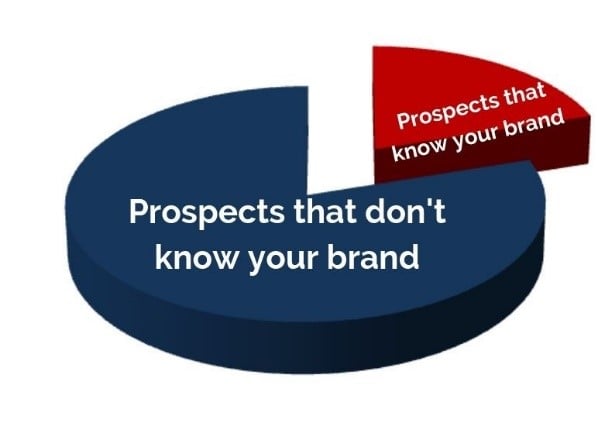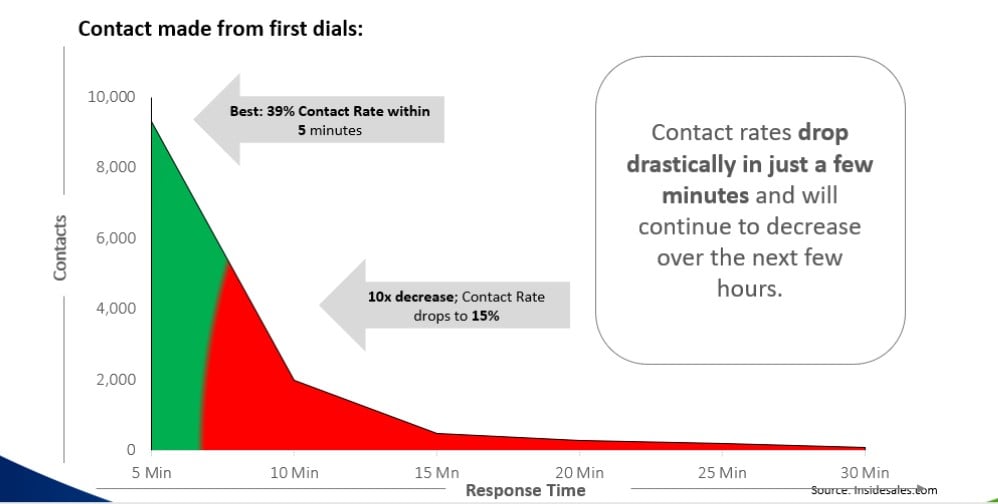Whether you rent or sell storage containers, you goal is likely the same: introduce your brand to new customers and increase revenue. Let’s face it – America’s buying experience has fundamentally moved online. So to stay competitive in this industry, you have to stay on top of utilizing internet-based storage container leads, and getting good at it! Here are a few key principles for taking advantage of this lead source:
Familiarity and Intent

There are different levels of both familiarity with your brand and intent to buy, and these two things will heavily impact whether the lead will be converted into a sale. Familiarity can range from leads that recognize your brand, were referred by someone who recognizes your brand, or are repeat buyers, to leads that have never heard of your company and don’t understand what you have to offer. There’s also intent to buy, which can range from sales-ready buyers who come to you on their own, to people who have no intent to buy whatsoever.
Generating storage container leads with high intent to buy and putting in place systems that will improve your brand recognition will yield the best results.
Revenue: a 2-Part Equation
Revenue is the end goal for everyone, isn’t it? There are two sides to this coin – lead quality and sales excellence. About 43% of success is based on lead quality and the other 57% is based on the performance of your sales team. So first, you’ll have to spend time and effort understanding whether your leads have active intent to buy. Second, you’ll have practice good follow-through – calling fast, often, tracking your progress, and continuing to nurture potential buyers as time moves forward. If you factor out either end of the equation, you’ll lose!
5 Common Sales Mistakes With Web-Based Storage Container Leads
#1. No Call Attempts
Instead of calling, it may be tempting to quote via email or even text. Be sure to actually speak to the potential buyer and hear their needs firsthand. When calling first instead of quoting first, you are actually 6 times more likely to close the sale. Also, do not disqualify the lead based on web-provided details, like personal email (gmail!) or company name. In a case study conducted by 360Connect analyzing 500 personal email addresses by way of a 5min online search, we found that roughly 50% of those email addresses were connected to executives or decision-makers. If you’re not calling these, how much money do you think you are losing?
#2. Waiting to Call

Time kills all deals! Generally, the more time you let pass after an internet-based storage container lead submits a quote request, the lower your chance is of closing the sale. 35-50% of sales goes to the supplier that calls first. The first caller frames the buying experience – once the lead has the time to speak with other callers that satisfy their buying needs, the lead has limited interest remaining. We recommend calling within 5 minutes of the lead’s quote request.
#3. Not Calling Enough
It’s likely that you and your team are not calling leads enough. We recommend the 3-2-1 method. On the first day, call the lead 3 times – once immediately, again later leaving no voicemail, and finally at the end of the day leaving a voicemail. On the second day, call and leave a voicemail in the beginning of the day and follow up later with no voicemail. On the third day, call once and leave a short voicemail with your contact information. If you still cannot reach the lead, CONTINUE TO CALL until you get a clear next step and add the contact to your nurture campaign.
#4. Not Tracking Leads
We have a saying on our sales floor – “if it didn’t happen in Salesforce, it didn’t happen.” How can you possibly remember detailed notes from over 1,000 potential prospect conversations? We’ll tell you how: invest in a CRM system. 3 things should be recorded during every discussion – your behaviors (how many calls, emails, and follow-ups), opportunity stages (where the buyer is in the buying cycle, including wins, losses, appointments and proposals) and any lead-specific notes. Then, with your team, look for patterns between your lead notes and remedy problems moving forward.
#5. Giving Up Early
Just because a potential buyer tells you no, it doesn’t necessarily mean they will never be converted into a sale. Keep in mind that 60% of B2B sales cycles are 90 days or more – even if they do not formally close the first time you reach out, it doesn’t mean they won’t purchase in the future. Create a combination email and phone nurture campaign, including these leads. When it’s time to buy, they will remember you.

